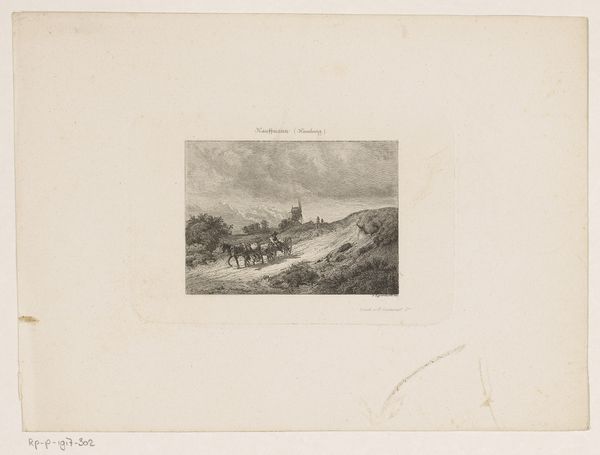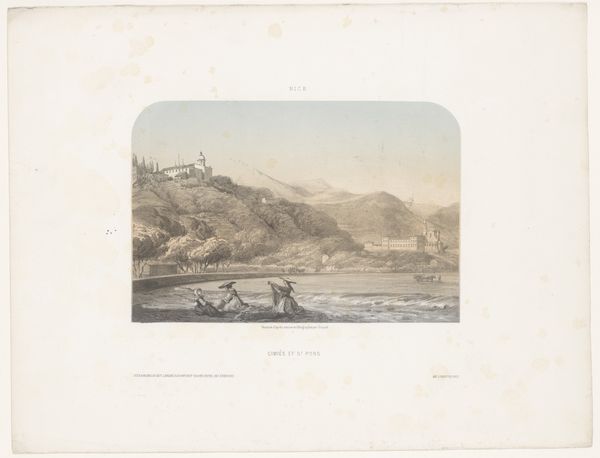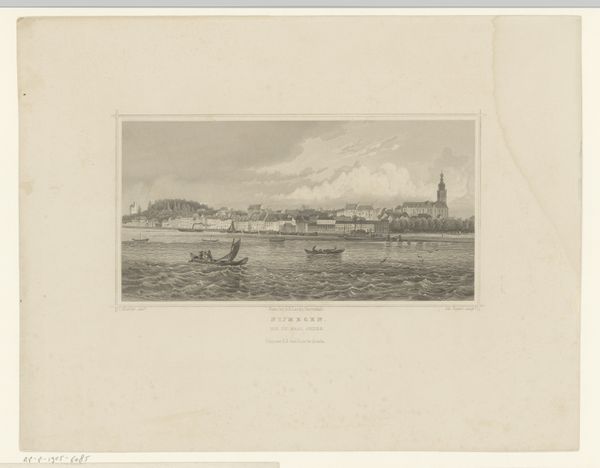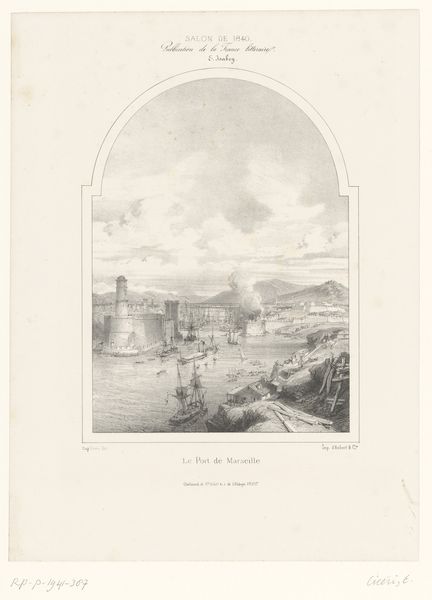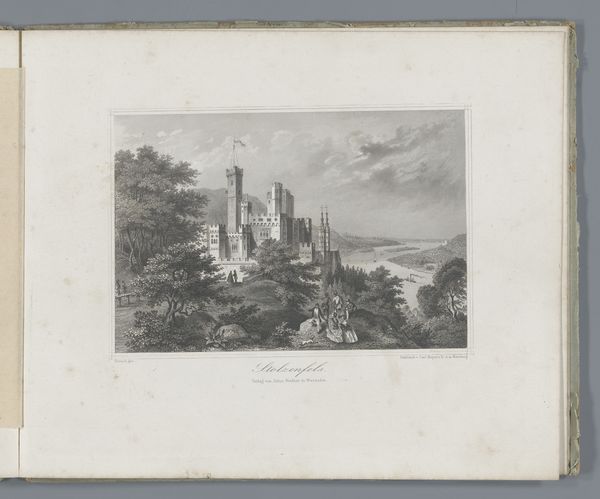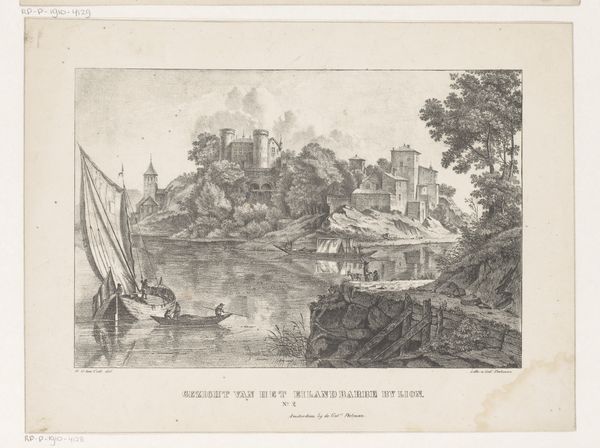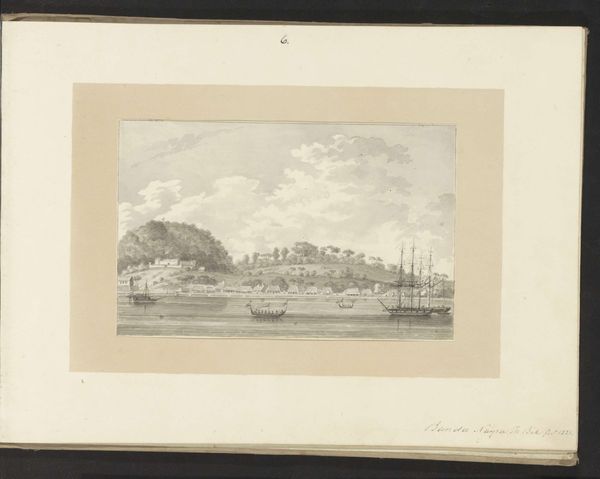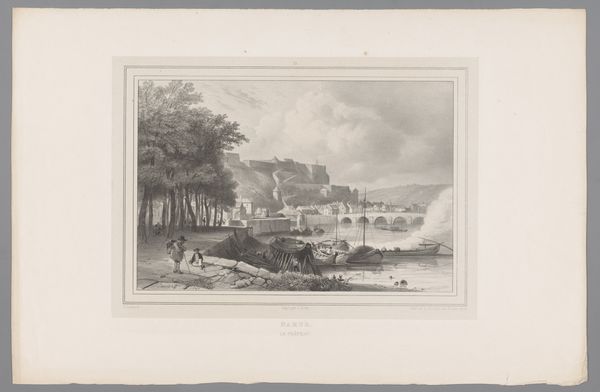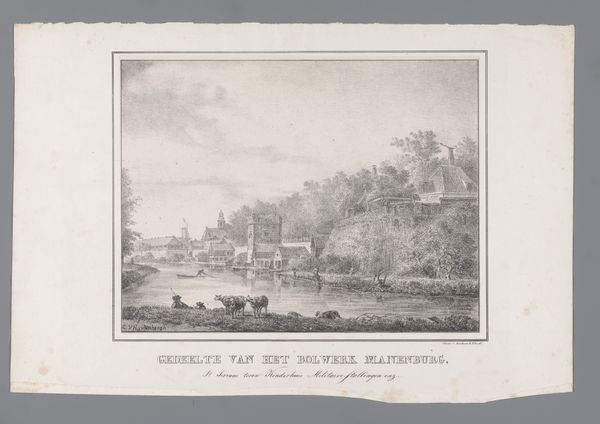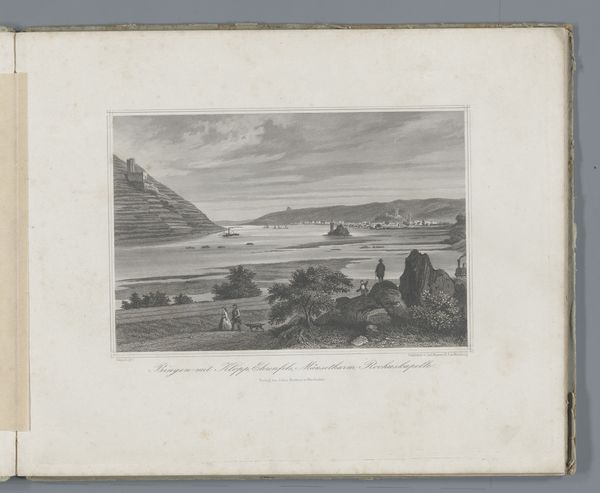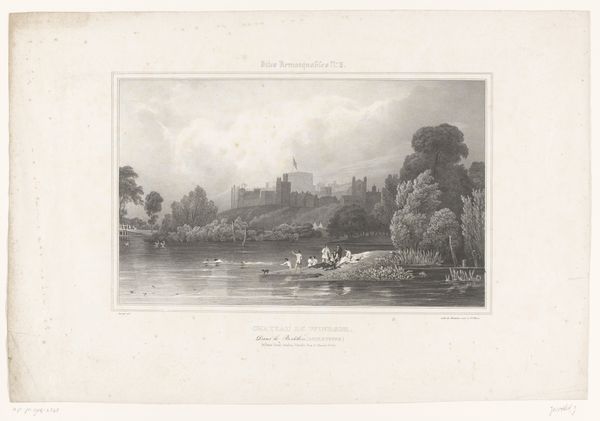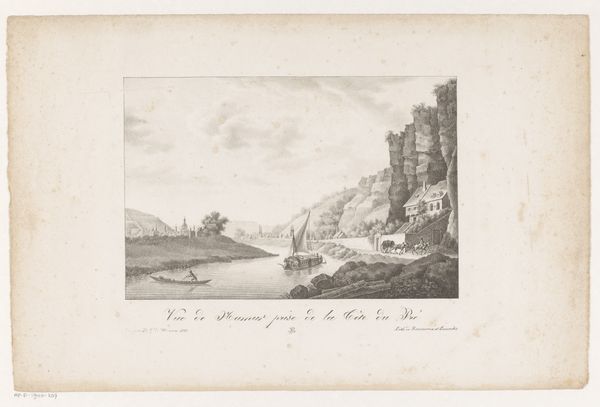
Zicht op een baai met de Gloria-kerk in Rio de Janeiro 1822
0:00
0:00
jacquesetiennevictorarago
Rijksmuseum
# print
#
landscape
#
romanticism
#
cityscape
Dimensions: height 270 mm, width 362 mm
Copyright: Rijks Museum: Open Domain
This delicate etching of the Gloria Church in Rio de Janeiro was made by Jacques Etienne Victor Arago in the 19th century. He has used the traditional printmaking technique of etching, where lines are incised into a metal plate, inked, and then transferred to paper under great pressure. The fineness of the lines allows for incredible detail, seen in the architecture and the figures in boats. The artist’s skill is evident in the control he has over the depth and spacing of these lines, creating tone and texture. But let’s think about that paper, too. Its whiteness throws the lines of the print into sharp relief, emphasizing the contrast between light and shadow. Paper was an industrial product at this time, and the artist would have purchased it ready-made. It has a social impact too: the whiteness would have been achieved with bleach, and we have to think about the labor and environmental effects of that process. Considering the materials and processes used gives us a fuller understanding of this artwork and its place in the world.
Comments
No comments
Be the first to comment and join the conversation on the ultimate creative platform.
